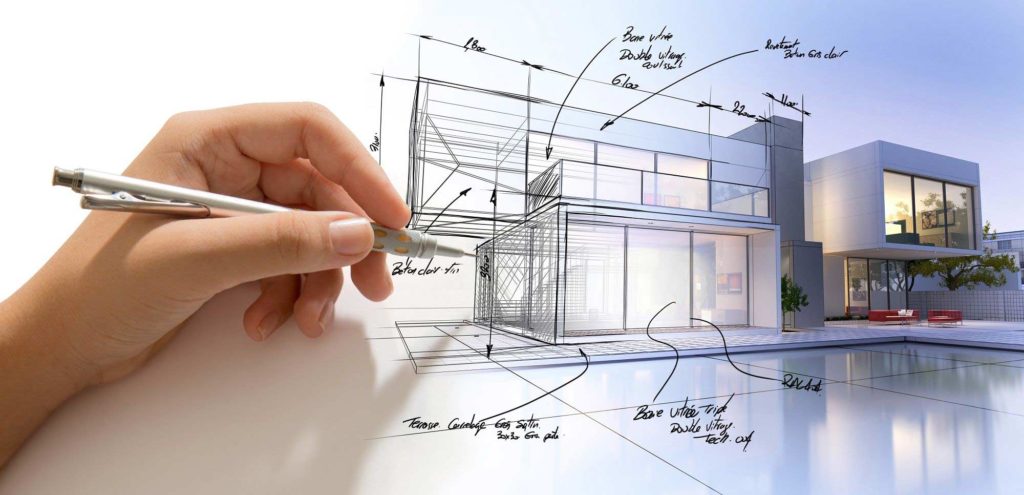Architect Checklist for Recent Commercial Projects
Architect Checklist for Recent Commercial Projects
Blog Article
Comprehending the Diverse Career Paths Available for Aspiring Architect
As an aspiring Architect, you have a globe of profession paths waiting for you. Each path supplies unique obstacles and chances to apply your creativity and technical expertise. Whether you're drawn to conventional style or the subtleties of lasting layout, there's a particular niche that straightens with your rate of interests. Recognizing these varied options can form your expert trip, however which direction will you pick to discover first?
Standard Architecture: Designing Buildings and Frameworks
Traditional architecture concentrates on making buildings and frameworks that blend performance with visual appeal. As you explore this area, you'll appreciate the elaborate balance in between kind and purpose. You'll learn to attract motivation from historic styles, incorporating aspects like balance, products, and workmanship. Your layouts can mirror social heritage, showcasing neighborhood practices while fulfilling contemporary demands.
You'll develop abilities in preparing, model-making, and site analysis, permitting you to envision and communicate your ideas effectively. Engaging with clients, you'll require to comprehend their vision and equate it right into possible layouts.
In addition, constructing codes and sustainability practices are important in your work, guaranteeing your frameworks are risk-free and eco-friendly. As you grow in your job, you'll find opportunities in household, commercial, or also reconstruction jobs, each offering distinct obstacles. Embracing conventional architecture leads the way for a satisfying profession that admires the past while shaping the future.
Urban Planning: Forming Communities and Public Spaces
As a hopeful Architect, you can play an essential duty as a metropolitan organizer, transforming exactly how neighborhoods engage and function. By employing area engagement strategies, you'll assure that homeowners have a voice in shaping their environment. And also, integrating sustainable design concepts will assist develop areas that not just fulfill today's requirements but likewise secure the future.
Role of Urban Planners
While lots of may consider engineers as the sole visionaries behind structures, urban planners play a vital role fit the wider landscape of communities and public spaces. They evaluate land usage, zoning laws, and neighborhood requires to develop sustainable environments that enhance lifestyle. By teaming up with numerous stakeholders, you'll aid design parks, transport systems, and suburbs that promote social interaction and ease of access. Urban planners likewise concentrate on ecological considerations, making sure that developments integrate environment-friendly rooms and support biodiversity. Your know-how in spatial style and neighborhood dynamics enables you to visualize future development while protecting social heritage. In this crucial duty, you'll directly affect how individuals experience their environments, making every job an opportunity for positive adjustment.
Community Interaction Methods
Reliable community engagement strategies are essential for urban coordinators to guarantee that the voices of locals are heard and valued in the preparation process. To promote meaningful dialogue, you ought to prioritize open online forums and workshops where neighborhood members can express their concepts and issues. By actively listening and including comments, you'll create rooms that show the area's needs, ultimately leading to even more successful and lasting metropolitan atmospheres.
Sustainable Design Principles
When making metropolitan areas, integrating sustainable style principles is essential for creating environments that thrive both ecologically and socially. Consider incorporating environment-friendly rooms, like gardens and parks, to improve biodiversity and enhance air quality.
Designing with water conservation in mind is also essential-- think of rain gardens and absorptive surface areas to handle stormwater. Entailing area members throughout the planning procedure guarantees that the rooms you produce fulfill their demands and urge social interaction. By welcoming these principles, you'll add to lively, sustainable metropolitan landscapes that profit everybody.

Landscape Style: Producing Sustainable Exterior Environments
As you check out landscape design, you'll find vital design concepts that create functional and beautiful outside spaces. Lasting practices play a crucial function in guaranteeing these atmospheres prosper while minimizing ecological influence. And also, you'll locate a variety of occupation possibilities that permit you to make an actual difference in how people communicate with nature.
Design Principles in Landscape
Recognizing design concepts in landscape architecture is vital for producing sustainable exterior settings that integrate with nature. You'll need to consider components like percentage, scale, and equilibrium to guarantee your designs feel cohesive and inviting. Additionally, pay focus to seasonal adjustments, making with materials that enhance the surroundings year-round.
Sustainable Practices Review
Sustainable methods in landscape style not just concentrate on appearances yet likewise focus on eco-friendly health and wellness and resource preservation. By integrating indigenous plants, you enhance biodiversity and reduce the requirement for chemical fertilizers and chemicals. Implementing effective watering systems helps save water and lessens overflow, securing nearby environments. You can create spaces that promote soil health, such as utilizing natural products and practicing permaculture principles. In addition, including environment-friendly facilities, like rainfall yards and porous pavements, help in stormwater management and minimizes urban heat. When you create outdoor atmospheres with sustainability in mind, you add to a healthier planet and supply spaces that promote community link. Eventually, these techniques assure your designs benefit both people and the setting for several years ahead.
Profession Opportunities Exploration
With a solid foundation in sustainable techniques, landscape style offers a range of profession paths that allow you to make a significant effect on the environment. You could work as a landscape developer, developing cosmetically pleasing and practical outdoor spaces, or concentrate on ecological repair, assisting to restore broken ecosystems. Urban coordinators typically team up with landscape engineers to produce eco-friendly areas in city setups, improving city livability. If you're passionate regarding education and learning, take into consideration ending up being a landscape design teacher, motivating future generations. Furthermore, you may function with nonprofits concentrated on ecological sustainability or involve in research to innovate new methods. Each course not just forms stunning settings yet also fosters a much healthier world for future generations.
Lasting Layout: Concentrating on Eco-Friendly Practices
As you discover your profession in architecture, accepting environmentally friendly techniques can set you apart in a competitive area. Lasting layout concentrates on producing structures that lessen environmental impact while enhancing occupant health. By incorporating renewable products, energy-efficient systems, and lasting structure strategies, you'll add to a greener future.
Begin read more by gaining knowledge of green qualifications like LEED or BREEAM, which can strengthen your qualifications. Consider exactly how natural light, air flow, and thermal effectiveness can enhance design. Collaborate with engineers and environmental professionals to introduce remedies that decrease waste and conserve sources.
Do not neglect the significance of area involvement-- interesting local stakeholders can influence styles that harmonize with the environment. As clients increasingly focus on sustainability, your know-how in eco-friendly techniques will not only draw in tasks however additionally fulfill your interest for accountable style. Embrace this essential aspect of the profession, and see your job flourish.
Historical Conservation: Shielding and Recovering Social Heritage
While you begin on your building trip, think about the essential function of historical preservation in keeping our social heritage. This area focuses on the security and repair of significant structures, sites, and structures that tell the tales of our past. By engaging in historic preservation, you'll help guard the building legacy that forms area identification.
As a historical preservation Architect, you'll examine historical significance and examine the condition of frameworks. You'll function carefully with historians and guardians to ensure authentic restoration methods are employed. This occupation course permits you to Architect mix creativity with research, allowing you to design remedies that appreciate initial materials and craftsmanship.
Your work not only adds to sustainability by recycling existing structures yet likewise cultivates a feeling of satisfaction within neighborhoods. Accepting this course will assist you become a guardian of background, protecting the tales and visual appeals that improve our lives.
Inside Design: Enhancing Indoor Spaces
Historical conservation and interior design both share a dedication to boosting the built atmosphere, but they concentrate on different elements. While historic conservation highlights preserving a structure's historic and cultural value, indoor architecture absolutely nos in on maximizing indoor spaces for functionality and appearances.
As an ambitious Architect, you'll discover that indoor style permits you to mix creativity with technical abilities. You'll design rooms that not only look great however additionally promote comfort and efficiency. This area involves comprehending exactly how light, color, and materials engage within a space, impacting state of mind and usability.
You'll deal with different tasks, from household homes to industrial offices, making certain that each atmosphere meets the demands of its owners. By prioritizing user experience, you can transform insides right into functional and inspiring areas, making a substantial effect on just how people interact with their surroundings. Embrace the chance to enhance indoor settings and shape the method individuals work and live.
Industrial Layout: Combining Performance With Appearances
Industrial style plays a crucial duty in creating items that effortlessly mix aesthetic appeals with functionality, ensuring that what you utilize day-to-day is not only visually appealing but additionally practical. As a hopeful Architect, you could engage on your own in this area, focusing on making whatever from furniture to customer electronic devices. Your job includes recognizing individual requirements, materials, and manufacturing procedures, enabling you to create ingenious solutions that improve daily experiences.
In industrial style, you'll frequently team up with marketers, engineers, and makers, making certain that your designs are not just lovely but additionally possible. This profession path offers a dynamic atmosphere where creative thinking satisfies practicality, making it a fulfilling option for designers interested in shaping the products of tomorrow.
Often Asked Concerns
What Educational Accreditations Do I Required to Come To Be an Architect?
To read more come to be an engineer, you'll require a professional degree in architecture, usually a Bachelor's or Master's. In addition, you'll have to finish an internship and pass the Architect Registration Evaluation to exercise legally.
Are There Accreditation Requirements for Different Building Occupation Paths?
Yes, there're accreditation requirements for various architectural paths. Architect. You'll need to pass tests, complete teaching fellowships, and occasionally seek specialized training, depending upon your chosen emphasis, like landscape architecture, urban style, or historical conservation
What Software Abilities Are Crucial for Engineers Today?

Just How Can I Gain Practical Experience While Examining Design?
You can gain sensible experience by interning at architectural companies, taking part in layout competitors, volunteering for community projects, or teaming up with schoolmates on real-world projects. These opportunities boost your abilities and develop important links in the industry.
What Task Opportunities Exist Outside Traditional Style Firms?
You can discover various job opportunities outside traditional architecture companies, like metropolitan preparation, interior decoration, landscape style, building and construction management, property advancement, or also functions in sustainability consulting. Each offers one-of-a-kind challenges and benefits.
Whether you're attracted to standard design or the nuances of sustainable design, there's a particular niche that aligns with your rate of interests.When developing urban areas, including sustainable layout principles is vital for creating settings that prosper both environmentally and socially.As you explore landscape design, you'll discover necessary design concepts that develop beautiful and practical outside areas.Comprehending layout concepts in landscape style is essential for developing lasting outside environments that harmonize with nature.In commercial style, you'll frequently team up with manufacturers, marketing professionals, and engineers, making certain that your designs are not only lovely yet additionally feasible.
Report this page